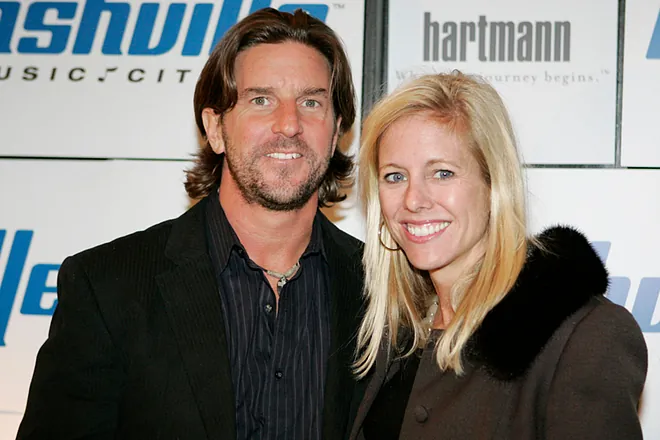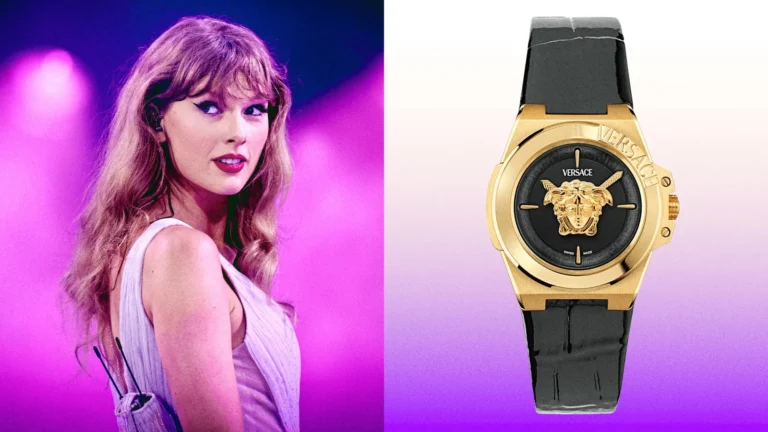Sydney Sweeney has never been a stranger to public attention. From Euphoria’s breakout success to high-profile brand endorsements, she has cultivated a public image that blends Hollywood glamour with relatable, off-duty charm. But her latest fashion campaign with American Eagle has pulled her into a different kind of spotlight — one colored by controversy, cultural sensitivity debates, and the challenges of marketing in 2025.
Instead of retreating from public view, Sweeney is doubling down on visibility — showing fans that she’s still out enjoying life, still working, and still moving forward.

A High-Energy Night Out
Days after the backlash hit social media, Sweeney shared a slice of her personal life with followers. Her Instagram post, captioned “Duval diaries,” captured her handing out shots to friends, standing on stage with a microphone, and beaming under the lights of a busy venue.
The photos showcased her in a white cotton crop top, oversized blue denim jeans, and white sneakers, with blonde hair worn loose and a fresh tan that added to the laid-back, summer aesthetic.
It was the kind of post that could have been dismissed as a typical night out — if not for the timing. After a week of trending discourse around the American Eagle campaign, the images felt like a subtle message: she’s unfazed, she’s still here, and she’s not letting the controversy define her.
Breaking Down the American Eagle Campaign
The American Eagle Autumn 2025 campaign was built around a playful pun: “Sydney Sweeney Has Great Jeans.” It’s the kind of wordplay fashion marketing has leaned on for decades — tying the quality of denim to the “genes” of the person wearing them.
In a series of promotional videos, Sweeney referenced inherited traits like hair color and eye color, joking:
“Genes are passed down from parents to offspring… my genes are blue.”
Another video saw her modeling a denim jumpsuit while remarking on her body composition, delivering the cheeky line: “Hey, eyes up here.”
On paper, it’s a safe campaign concept: light, flirty, and on-brand for both the retailer and Sweeney’s image. In execution, however, it hit a nerve.
The Backlash: From Pun to Problem
Within hours of the campaign going live, clips began circulating on TikTok, X (formerly Twitter), and Instagram. Critics argued that linking genetic traits to beauty and desirability was not just outdated, but dangerously reminiscent of eugenics rhetoric — ideologies historically used to promote racial purity and exclusion.
Some comments accused the ad of carrying white supremacist undertones, particularly given Sweeney’s blonde hair and blue eyes being presented as “ideal” traits. Others said the wordplay was tone-deaf in a climate where brand messaging is heavily scrutinized for inclusivity.
The critique escalated quickly, amplified by the speed and virality of TikTok discourse. Short-form videos stitched Sweeney’s ad with historical images and commentary, creating a context that went far beyond what American Eagle intended.
American Eagle’s Response
American Eagle issued a public statement on Instagram, clarifying that the phrase “great jeans” referred exclusively to clothing.
“Our campaign celebrates style, confidence, and self-expression through our denim,” the statement read. “Any reference to ‘genes’ was intended as lighthearted wordplay — nothing more.”
The brand’s strategy was to correct the interpretation without apologizing for the creative concept. By keeping the focus on fashion and steering clear of acknowledging any racial implications directly, they signaled that they saw the backlash as a misinterpretation, not a misstep.
Fans Split Over Interpretation
The public reaction hasn’t been entirely negative. Many defended Sweeney, arguing that the criticism was overblown and that the humor was clearly about jeans, not genetics in a political sense. Fashion advertising has long relied on double meanings and playful puns, and supporters saw this campaign as being in that tradition.
The divide in public opinion underscores the current tension in celebrity marketing: what reads as harmless to one audience can feel coded or exclusionary to another.
Sweeney’s Career Context
This controversy arrives at a busy moment in Sweeney’s career. The actress has been actively building a portfolio that spans:
- Television: Her breakout role in Euphoria remains a cultural touchpoint.
- Film: She stars in the upcoming Christy Martin boxing biopic, a challenging transformation into a real-life sports legend.
- Cinema Release: Her film Eden is scheduled for release on August 22, adding to her summer visibility.
- Fashion Collaborations: Beyond American Eagle, she has worked with Miu Miu, Tory Burch, and Laneige.
Personal life changes have also made headlines — notably her split from longtime fiancé Jonathan Davino.
The PR Playbook: Distraction vs. Retraction
Sweeney’s handling of the controversy so far leans toward distraction, not retraction. She hasn’t directly addressed the criticism herself. Instead:
- Maintaining Social Presence – Regular posts to Instagram show her in upbeat, social settings.
- Focusing on Upcoming Work – Media coverage now splits between the ad debate and anticipation for her film roles.
- Avoiding Defensive Statements – By not commenting directly, she avoids giving the backlash a longer news cycle.
This approach carries risk — silence can be read as dismissive — but it also prevents missteps that can happen when celebrities respond hastily to sensitive topics.
Why This Campaign Struck a Nerve
Part of the reason this backlash gained traction is contextual sensitivity. In 2025, fashion advertising operates in a climate where visual language and phrasing are dissected instantly across millions of screens. Even if a brand’s intent is playful, the audience controls the narrative once content is public.
Factors that amplified the controversy include:
- Historical Associations: Blonde hair, blue eyes, and “good genes” language have been politicized in certain extremist ideologies.
- Platform Dynamics: TikTok’s algorithm rewards emotionally charged takes, which can magnify outrage.
- Cultural Shifts in Advertising: The demand for inclusive, diverse representation means any message perceived as exclusionary faces immediate pushback.
Celebrity Influence in Brand Risk
For brands, working with a high-profile celebrity like Sweeney is both an asset and a liability. Her massive reach ensures visibility, but her personal image becomes inseparable from the campaign’s reception.
In this case, even though American Eagle was the creative driver, Sweeney’s face and voice carried the message — making her the focal point of the debate.
Looking Ahead: Will the Controversy Stick?
For Sweeney, the likely outcome is short-term turbulence, long-term recovery. She remains a bankable name in Hollywood, and her upcoming projects give media outlets plenty of new angles to cover.
If Eden performs well and the Christy Martin biopic generates awards buzz, the American Eagle backlash could fade into a footnote in her career timeline.
Key Takeaways for Celebrity Branding
From a media strategy standpoint, this episode illustrates:
- Puns Can Be Risky – Wordplay isn’t inherently safe; context changes meaning.
- Visual Pairings Matter – Messaging about “genes” paired with specific physical traits will be read politically by some audiences.
- Speed of Reaction Is Crucial – Brands that clarify early can contain narrative drift.
- Silence Can Be Strategic – Celebrities sometimes benefit from letting the brand take the heat.
Whether you see the American Eagle campaign as clever marketing or tone-deaf messaging, it’s clear that celebrity-led ads in 2025 operate under instant, relentless scrutiny.
Sydney Sweeney’s choice to keep her public life vibrant — posting from nights out, promoting films, and not publicly engaging in the backlash — shows an understanding of the attention economy: control the images, and you might just control the story.







